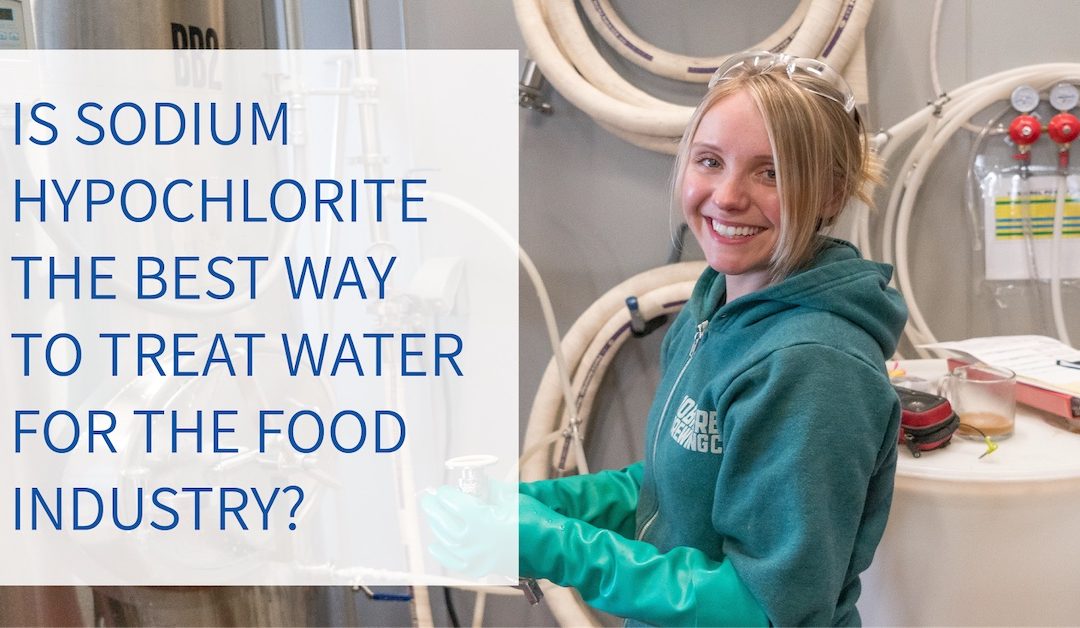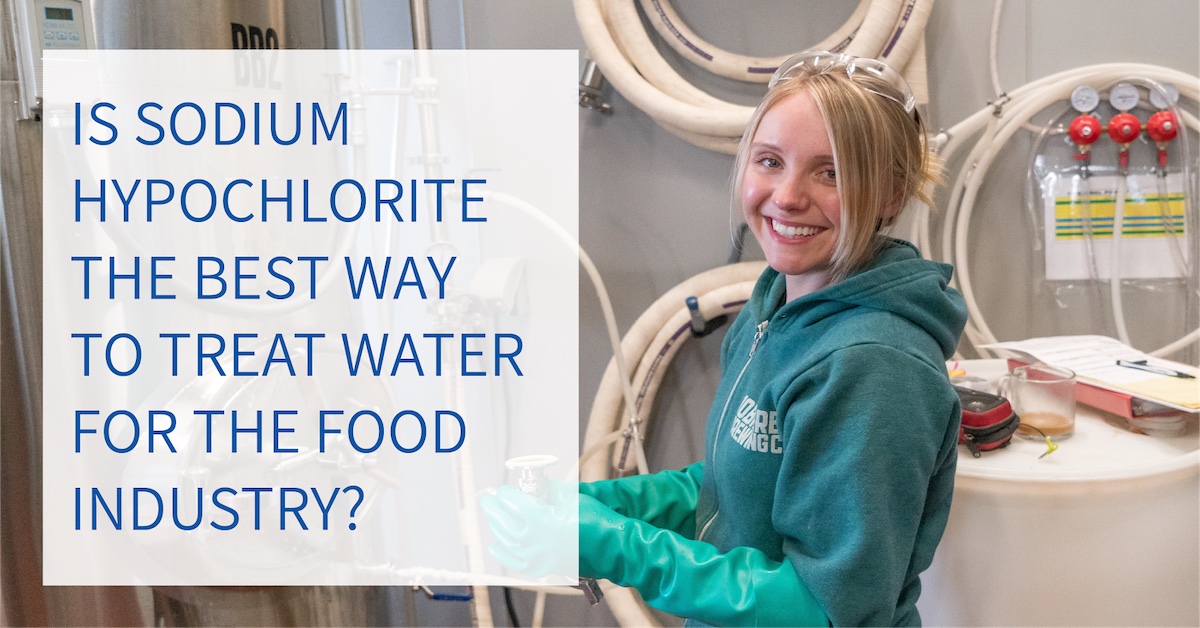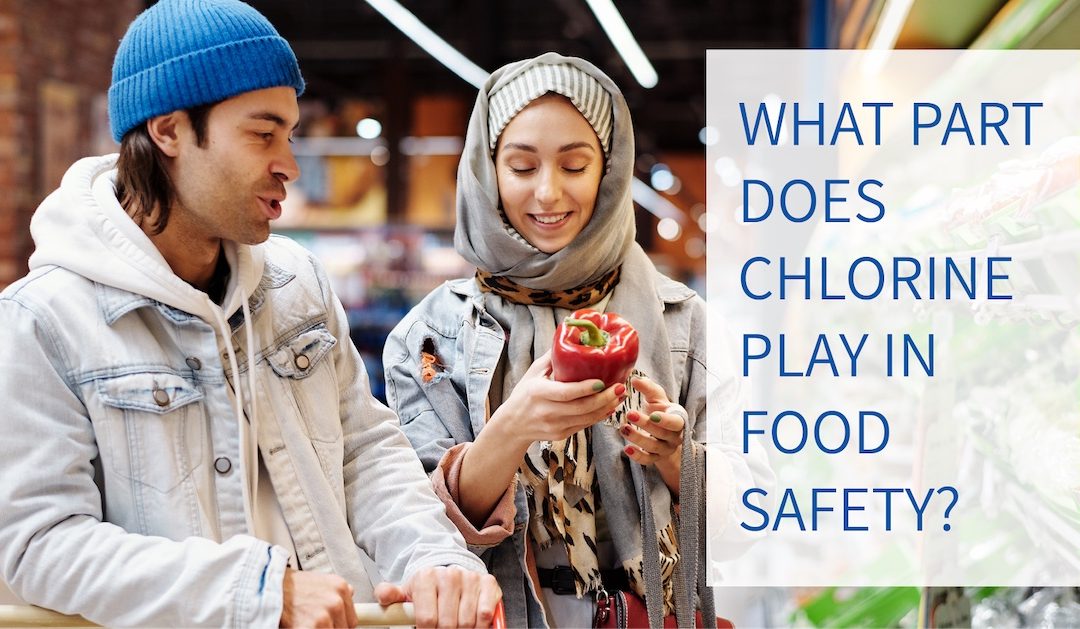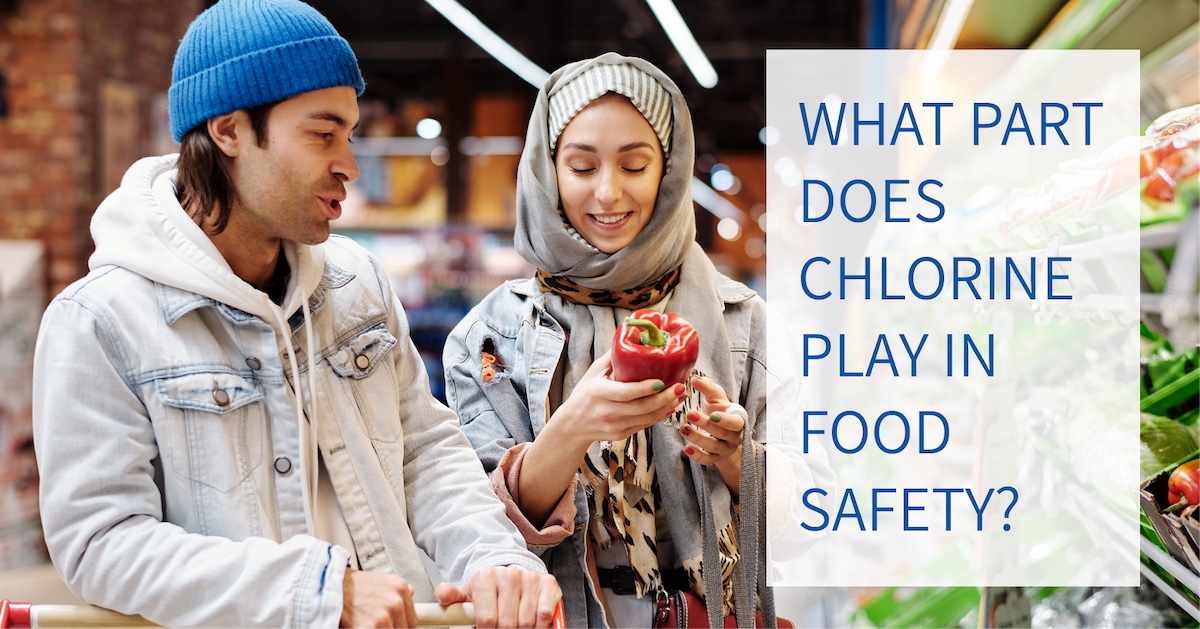Why is Electrochlorination the best choice for swimming pool disinfection?All swimming pools should be regularly and thoroughly disinfected. This eliminates harmful pathogens that cause sickness in swimmers and prevents the growth of other biological organisms, such...
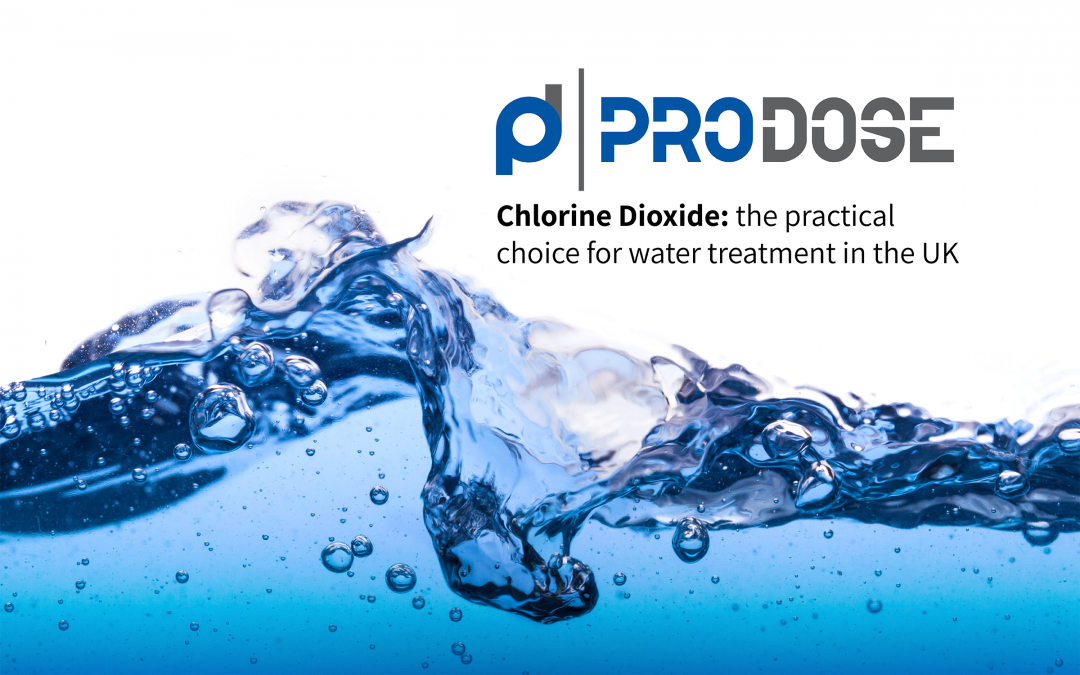
Chlorine Dioxide: the practical choice for water treatment in the UK
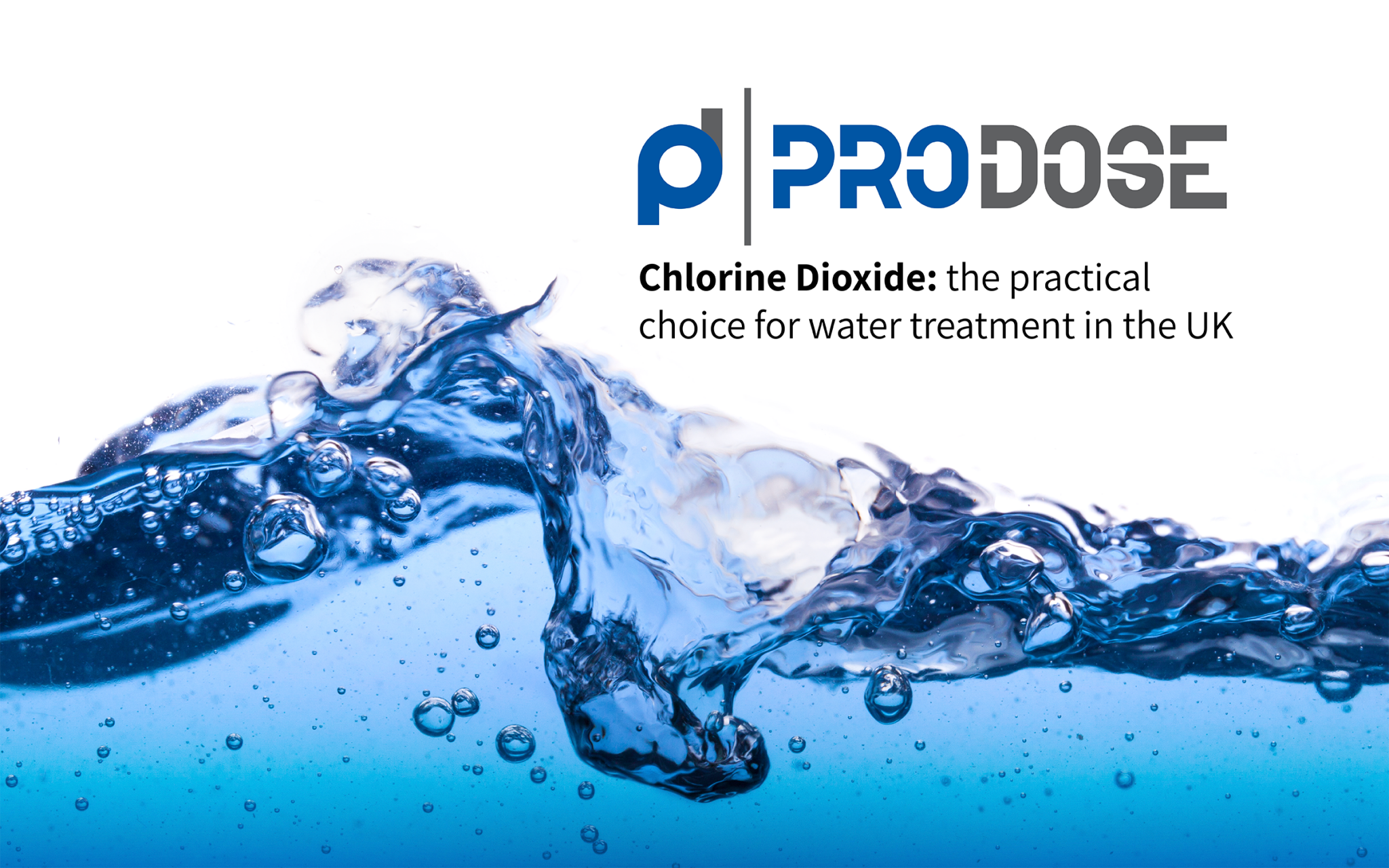
Chlorine Dioxide: the practical choice for water treatment in the UK
What is Chlorine Dioxide?
Chlorine dioxide (ClO2) is a yellow or reddish-yellow gas. It’s a highly reactive compound, especially when heated. When exposed to the air, sunlight breaks it down into chlorine gas and oxygen. Chlorine gas is toxic if inhaled. Chlorine dioxide turns to liquid below 11ºC and can be frozen into an orange-colored solid, for instance for shipping, although it must be carefully monitored during transit.
As chlorine dioxide is such a volatile compound, difficult to store or transport safely, it is usually manufactured in solution form at the point of use, as and when required. It does not occur naturally. Chlorine dioxide, when dissolved in water, is an efficient disinfectant and is used around the world to make drinking water safe. Chlorine dioxide solution has many other industrial and agricultural applications, including bleaching paper and fabric, and disinfecting food processing equipment.
How is Chlorine Dioxide made?
Chlorine dioxide can be explosive and cause burns in gas form, so it is most commonly manufactured as a stable solution. Chlorine dioxide solution is generated through the acidification of sodium chlorite. This process involves adding sodium chloride crystals or flakes to water (producing sodium chlorite NaClO2) and a food-grade acid (e.g., phosphoric acid, hydrochloric acid, citric acid, malic acid, or sodium hydrogen sulfate). This combination generates chlorous acid (HClO2), which decomposes to a specific and controlled mix of chlorite (ClO2), chlorine dioxide (ClO2) and chloride (Cl ̄).
Alternatively, a stabilized chlorine dioxide solution is “activated by adding small doses of a strong acid. This releases low quantities of gaseous chlorine dioxide over a period of time.
Why is Chlorine Dioxide such an effective water treatment?
Although chlorine is usually the chemical associated with water treatment, chlorine dioxide is a better choice for many reasons. Both chlorine and chlorine dioxide are highly reactive, but chlorine dioxide has the advantage in that it only reacts with a narrow range of chemicals. It remains stable across a wider range of pH values than chlorine: it’s only active in the pH4-10 range. It does not react with the vast majority of organic compounds therefore it is easier to control and has more of an effect at lower residual levels than either chlorine or another competitor, ozone.
One of the main reasons for sanitizing the water supply is to destroy biofilms, the slimy collection of molds, viruses, and bacteria that may be found growing on the surface of equipment. Biofilms often build up in pipework, or in the warm environments offered by hot and cold water systems in buildings and cooling towers.
The microorganisms in biofilms include disease-causing pathogens such as E.coli, Salmonella, Campylobacter and Listeria so it’s important to prevent their development and stop the spread of any spores. The microorganisms cluster together and secrete a protective polysaccharide “glue” that helps them to resist outside elements.
Chlorine dioxide penetrates this slimy outer layer by breaking down the inert sugars. Unlike other biocides, chlorine dioxide then continues reacting with the proteins that the microorganisms are built from, disrupting cell function and preventing them from reproducing. Chlorine dioxide is particularly effective at preventing the build-up of Legionella, Giardia Lambia and Cryptosporidium oocysts in public drinking water supplies.
Another reason to choose chlorine dioxide over chlorine is that it does not form disinfection by-products (DBPs) such as chloramines and halogenated compounds (Trihalomethane or THMS). Chloramines can taint the water, causing an unpleasant taste and/or odour. Obviously, it’s crucial that the water used in agricultural and food processes is odourless and tasteless so it doesn’t contaminate the product. Chlorine dioxide disinfects without side-effects.
Finally, chlorine dioxide oxidises swiftly as it only reacts with a narrow range of chemicals. This means it goes to work on the problem more quickly than other disinfectants and at lower residual levels. Chlorine dioxide is a much more precise, fast-acting water treatment solution than chlorine and its other competitors.
Looking for Chlorine Dioxide Generators?
What is Chlorine Dioxide?
Chlorine dioxide (ClO2) is a yellow or reddish-yellow gas. It’s a highly reactive compound, especially when heated. When exposed to the air, sunlight breaks it down into chlorine gas and oxygen. Chlorine gas is toxic if inhaled. Chlorine dioxide turns to liquid below 11ºC and can be frozen into an orange-colored solid, for instance for shipping, although it must be carefully monitored during transit.
As chlorine dioxide is such a volatile compound, difficult to store or transport safely, it is usually manufactured in solution form at the point of use, as and when required. It does not occur naturally. Chlorine dioxide, when dissolved in water, is an efficient disinfectant and is used around the world to make drinking water safe. Chlorine dioxide solution has many other industrial and agricultural applications, including bleaching paper and fabric, and disinfecting food processing equipment.
How is Chlorine Dioxide made?
Chlorine dioxide can be explosive and cause burns in gas form, so it is most commonly manufactured as a stable solution. Chlorine dioxide solution is generated through the acidification of sodium chlorite. This process involves adding sodium chloride crystals or flakes to water (producing sodium chlorite NaClO2) and a food-grade acid (e.g., phosphoric acid, hydrochloric acid, citric acid, malic acid, or sodium hydrogen sulfate). This combination generates chlorous acid (HClO2), which decomposes to a specific and controlled mix of chlorite (ClO2), chlorine dioxide (ClO2) and chloride (Cl ̄).
Alternatively, a stabilized chlorine dioxide solution is “activated by adding small doses of a strong acid. This releases low quantities of gaseous chlorine dioxide over a period of time.
Why is Chlorine Dioxide such an effective water treatment?
Although chlorine is usually the chemical associated with water treatment, chlorine dioxide is a better choice for many reasons. Both chlorine and chlorine dioxide are highly reactive, but chlorine dioxide has the advantage in that it only reacts with a narrow range of chemicals. It remains stable across a wider range of pH values than chlorine: it’s only active in the pH4-10 range. It does not react with the vast majority of organic compounds therefore it is easier to control and has more of an effect at lower residual levels than either chlorine or another competitor, ozone.
One of the main reasons for sanitizing the water supply is to destroy biofilms, the slimy collection of molds, viruses, and bacteria that may be found growing on the surface of equipment. Biofilms often build up in pipework, or in the warm environments offered by hot and cold water systems in buildings and cooling towers.
The microorganisms in biofilms include disease-causing pathogens such as E.coli, Salmonella, Campylobacter and Listeria so it’s important to prevent their development and stop the spread of any spores. The microorganisms cluster together and secrete a protective polysaccharide “glue” that helps them to resist outside elements.
Chlorine dioxide penetrates this slimy outer layer by breaking down the inert sugars. Unlike other biocides, chlorine dioxide then continues reacting with the proteins that the microorganisms are built from, disrupting cell function and preventing them from reproducing. Chlorine dioxide is particularly effective at preventing the build-up of Legionella, Giardia Lambia and Cryptosporidium oocysts in public drinking water supplies.
Another reason to choose chlorine dioxide over chlorine is that it does not form disinfection by-products (DBPs) such as chloramines and halogenated compounds (Trihalomethane or THMS). Chloramines can taint the water, causing an unpleasant taste and/or odour. Obviously, it’s crucial that the water used in agricultural and food processes is odourless and tasteless so it doesn’t contaminate the product. Chlorine dioxide disinfects without side-effects.
Finally, chlorine dioxide oxidises swiftly as it only reacts with a narrow range of chemicals. This means it goes to work on the problem more quickly than other disinfectants and at lower residual levels. Chlorine dioxide is a much more precise, fast-acting water treatment solution than chlorine and its other competitors.
What are the types of chlorination used in water treatment?
There are three main methods of chlorinating water, depending on the strength of the disinfectant required. Chlorine compounds can be added to the water as:
- Liquid (in the form of sodium hypochlorite);
- Solid, in the form of powder, granules, or tablets, made from calcium hypochlorite, chlorinated isocyanurates or lithium hypochlorite;
- Gas (highly toxic and only used under special conditions).
When chlorine or a chlorine compound is added into water it releases hypochlorous acid, HOCl. The hypochlorous acid commonly disassociates into other forms, such as the chlorite ion, OCl-, depending on the pH of the water. The amount of chlorine in the water in these forms is referred to as Free Chlorine. The reaction of chlorine with organics to form compounds such as chloramines is referred to as combined chlorine.
How is Chlorine Dioxide applied in water treatment?
Chlorine dioxide water treatment is a versatile process that can be adapted to many different types and sizes of facilities. Depending on the strength and speed of biocidal action required, chlorine dioxide can be generated on site and on demand from tablets, solutions, or via electrochlorination. This allows the operator to control the concentration of chlorine dioxide within their water system. The most common type of generators form chlorine dioxide as an aqueous solution of consistent product strength from the controlled reaction of Hydrochloric Acid and Sodium Chlorite.
As mentioned above, chlorine dioxide can also be stored and used in the form of Stabilised Chlorine Dioxide. This is an aqueous buffered solution of chlorine dioxide, activated through the addition of an additional acid solution. Some facilities find this to be a more convenient method of chlorination.
What are the benefits of Chlorine Dioxide water treatment to industry?
As a swift and efficient biocide, chlorine dioxide has many applications. It destroys bacteria, viruses, fungi and other pathogens on hard surfaces and within water supply systems. It can be added to any hot or cold water system, including cooling towers, swimming pools, and spas to destroy problem bacteria and viruses such as Pseudomonas, MRSA, E-coli, and cryptosporidium.
Chlorine dioxide is a vital component of the sanitization process at every stage of agricultural production, storage, and distribution. It’s also valued as a disinfectant for large buildings, such as office blocks, hotels, laboratories, and hospitals – especially those which might be vulnerable to legionella growth within their water supply. It’s employed across the hospitality sector as an all-round sanitizer and antimicrobial agent.
If you have questions about the use of Chlorine Dioxide in water treatment, please contact us. The Prodose team has more than ten years of expertise in this area and we can advise on all aspects of your water disinfection system. We offer end-to-end water treatment service, designing and installing your system, supplying chemicals, and servicing. Prodose is your one-stop shop for Chlorine Dioxide water treatment.
Recent Articles
Why is Electrochlorination the Best Choice for Swimming Pool Disinfection?
What is the Electrochlorination Process?
What is the Electrochlorination process?Electrochlorination is the process of applying an electrical current to salt water to produce dilute sodium hypochlorite (bleach) and hydrogen gas. The resultant sodium hypochlorite solution contains between 0.7%-1% chlorine....
Chlorine Dioxide and Legionella Control
Chlorine Dioxide and Legionella ControlLegionella is a bacterium found in soil and water. When it occurs outdoors, it usually does so in low concentrations and doesn’t cause problems. However, when it grows inside artificial water systems, such as hot tubs, hot water...
Chlorine Dioxide and Water Treatment for Plant Nurseries
Chlorine Dioxide and Water Treatment for Plant NurseriesHorticultural facilities, such as plant nurseries, face many of the same water sanitation issues as their agricultural counterparts. These issues include keeping ornamental and food plants healthy, maintaining...
Keeping it clean: the use of Chlorine Dioxide in the Food and Beverage Sector
Keeping It Clean: the use of Chlorine Dioxide in the Food and Beverage SectorChlorine dioxide is rising in prominence as the best water treatment additive for the food and drinks industry. It’s powerful and economical, and may be a more practical solution for...
Chlorine Dioxide: the practical choice for water treatment in the UK
Find out about Chlorine Dioxide and why it makes such an effective water treatment for the food industry and other industrial practices.
If you are interested in upgrading your system in this way, please get in touch with us at Prodose. We’d be very happy to talk to you confidentially and on a no-pressure basis.

